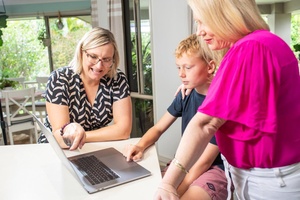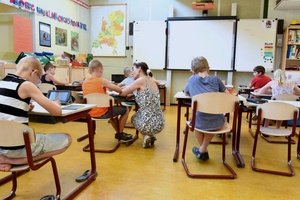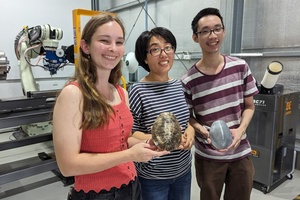Social-emotional confidence refers to students’ sense that they are able to act in socially and emotionally competent ways – for example, feeling confident to state their opinions in class, respond respectfully to opinions they disagree with, or calm any frustration that might arise when studying.
In a recently published study in the academic journal, Learning and Instruction, we examined social-emotional confidence and its effects among 501 adolescent students.
Findings showed that social-emotional confidence is linked with students’ wellbeing and social-emotional skills. As we explain in more detail below, helping to build social-emotional confidence among students is important for social-emotional development.
What is social-emotional confidence?
Social-emotional confidence is different from actual competence or skills because it refers to our self-perceptions of those skills. As noted above, social-emotional confidence reflects students’ sense that they can act in socially and emotionally competent ways.
Investigating social-emotional confidence is vital because the self-perceptions we hold have an impact on the actions we undertake and the goals we prioritise. If, for example, students feel confident to ask for help in the classroom, they’re more likely to do that when they need to.
In our study, students’ reports of five types of social-emotional confidence were examined. Namely, confidence for…
- Assertiveness – feeling confident to advocate for oneself and for others.
- Tolerance – feeling confident to be open-minded towards other people and their perspectives.
- Social Regulation – feeling confident to adjust social behaviours to meet the expectations of different contexts (e.g., remaining on-task and avoiding distractions).
- Emotion Regulation – feeling confident to manage one’s emotions so as to experience fewer negative emotions and more positive ones.
- Emotional Awareness – feeling confident to identify one’s emotions and recognise them when they arise.
The aim of our study was to investigate how these different types of social-emotional confidence are linked with students’ wellbeing and social-emotional skills.
Wellbeing was reported by students and focused on their experiences of more positive emotions and fewer negative emotions.
Two social-emotional skills were assessed by parents:
- Reframing emotions, which is students’ ability to change how they feel by looking at the situation differently (e.g., reminding themselves that their assignment grade isn’t so bad because it is better than what they got last month), and;
- Self-reflection, which is students’ ability to consider their thoughts and feelings (e.g., being able to recognise when they are feeling sad).
What did the study show?
The findings showed that the different types of social-emotional confidence were linked with greater student wellbeing and social-emotional skills (reframing and self-reflection).
This means that students who feel confident in their social emotional interactions experience more positive emotions and exhibit greater social-emotional skills.
We also examined the extent to which autonomy-supportive teaching was linked to students’ social-emotional confidence. This type of teaching refers to teachers’ efforts to consider and implement students’ perspectives in teaching and learning.
We found that students who felt their teachers were more autonomy-supportive reported greater social-emotional confidence. This indicates that autonomy-supportive teaching may be one way to boost students’ social-emotional confidence and in turn students’ wellbeing and social-emotional skills.
What do the findings mean for practice?
Our study suggests that efforts to support students’ social-emotional confidence are important. This is especially vital because other research shows that social-emotional skills can decline during adolescence.
Social and emotional learning programs are one approach for developing students’ social-emotional confidence (see www.beyou.edu.au for details of evidence-based programs).
Teachers may also want to apply autonomy-supportive teaching practices to enhance students’ social-emotional confidence. Some strategies include:
Providing a rationale for why students are asked to undertake a task (e.g., “It can be important to listen to your peers’ perspectives so you can understand how your own ideas may be viewed differently from what you intended”).
Being attuned to students’ needs (e.g., “It looks like you might be finding this task a bit challenging. Can you let me know what parts of it you are worried about so I can understand better and give some help?”)
Acknowledging any negative feelings that students may have in relation to a task (e.g., “I understand that this revision might not be very exciting, but it will help us with what we need to learn next”).















